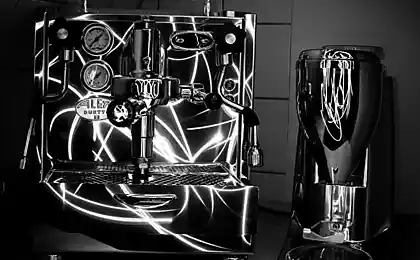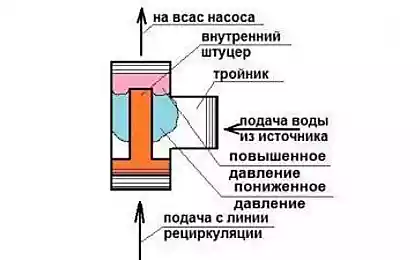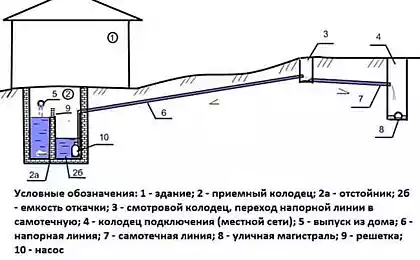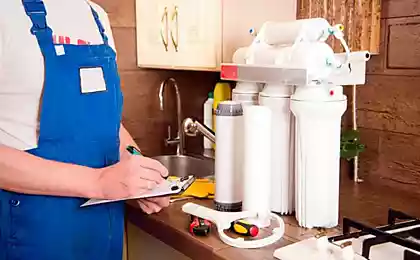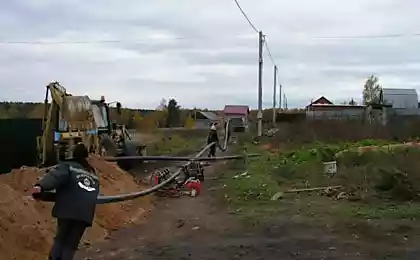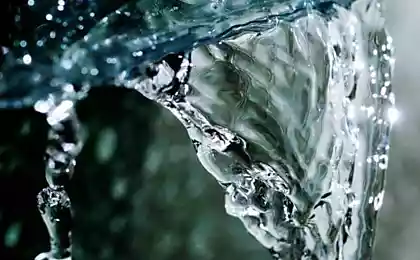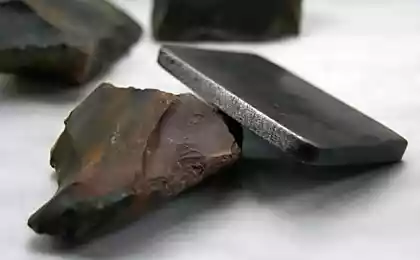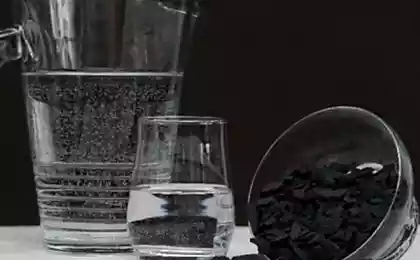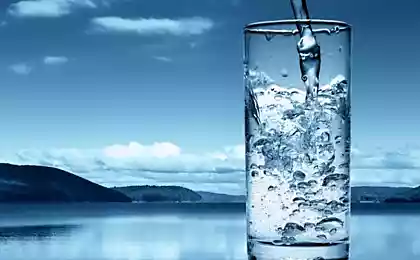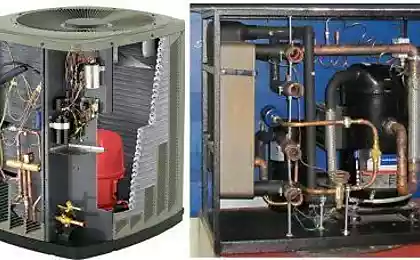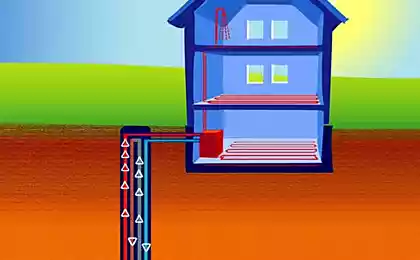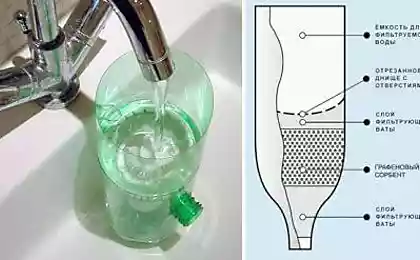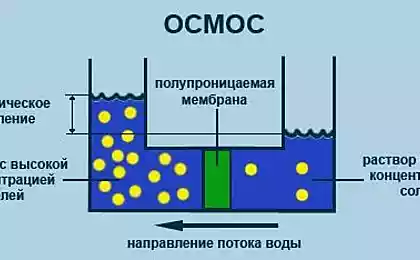726
How to make a water pump with your hands
Water pump — the thing is almost the first necessity in a suburban household. Manual and mechanized pumps are also used for pumping other types of liquids — fuels, solvents, oils, etc. the Opportunity to purchase expensive reliable pump is not always available, and cheap models break down, usually at the most inopportune moment. We consider variants of creation of the pumps from the material at hand and the details that are in each workshop, and their market value is miniscule in comparison with the new factory product.
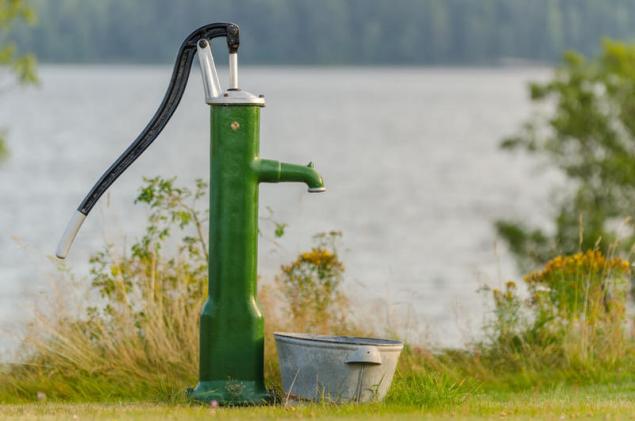
Option # 1. Water pump for water overflowPrimitive design for pumping water, which can collect in 10 minutes, will serve as a useful assistant tool for working in the garden. This is especially useful when you need to repeatedly collect water from barrels with buckets. In fact, this non-return valve mounted on the pipe with a tap.
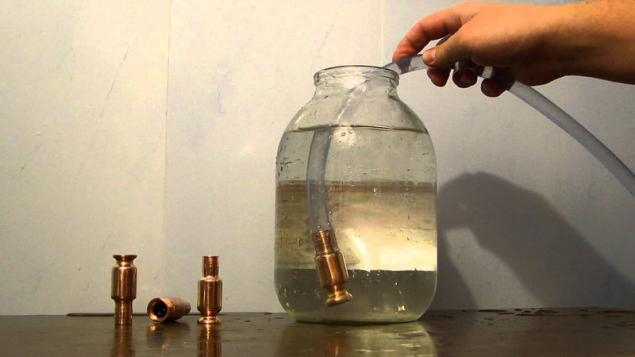
For manufacturing will need a tube, a hose and a few necks from plastic bottles in the collection.
Progress:
From cork take the gasket and cut it 2 mm smaller than the tube diameter, leaving untouched a segment of 3 mm. Drill a 10mm hole in the center of the lid. Set the petal into the cap and screwed the trimmed neck. It will squeeze the remaining segment. Insert the valve into the tube stock and put on a "skirt" from the trimmed plastic bottle. With the opposite end put the discharge hose. This device operates with just a few taps on the axis of the stem when the dispensing part with the valve immersed in water. Next, the liquid will go by gravity, while there are differences in levels. Then the water can be raised, submerging the rod in the barrel.
This is the only product with a "negative value." When it was created you not only will spend nothing (except time), but with the use of disposing of domestic waste.
Check valve with your hands. Step-by-step video for Assembly
Option # 2. A simple hand pump with his own handsIn this tutorial we give an example of a manual pump, which can be taken as the basis for creation of a stationary lifting post on the well or the well.
A — Classic design hand pump. B — Option a homemade pump from plastic tubes. The scheme of device: 1 — introduction inlet; 2 — valve; 3 — piston; 4 — valve; 5 — rod; 6 — shaft, combined with a discharge pipe; 7 — drain pump
For work we need:
Sewer pipe 50 mm PVC with taps, plug and cuff seals — 1 M. non-return valve 1/2" — 2 PCs. Pipe sewer PPR Ø 24 mm rubber, a pair of bolt/nut with washers Ø 6-8 mm. Clamps, sleeves, clips, fittings, other plumbing parts*. * Pump design can be customized depending on the availability of spare parts.
Method 1. Drain using the handle ofThis model is the easiest from home — the water rises in the piston rod, which is made of PPR pipe and poured on top.
Liner:
Cut pipe Ø 50 mm, length 650 mm is the basis for the sleeve. Make limit flap valve. To do this, the plug drill 8-10 holes, Ø 5-6 mm, and cut a round piece of rubber (about 3-4 mm) to the diameter of 50 mm. Fasten the flap on the center stub on the rivet or bolt (screw not suitable!). Petal valve ready. Install the plug into the pipe (sleeve) to the sealant through the sealant and additionally fix with screws through the pipe wall. The piston
In the pipe, PPR (700-800 mm) install the check valve. This can be done by way of "hot" to heat the pipe end and insert the fitting with the valve, which water must pass in the direction of the pipe (piston rod). To strengthen the connection screw-clamp until warm (to cool). The piston head can be made of the waste tube of sealant 330 ml, more precisely, its the bow. For this it is necessary, pre-heating, put in the liner — so the head is to take the desired shape and size. Then it should be cut and installed to a check valve in series with the help of the coupling with external thread or cap nut "American". Insert the piston into the sleeve and do the upper plug. It doesn't have to be airtight, just to keep exactly stock. On the free end of the rod (pipe) install the sleeves 90°. In the future, on the sleeves worn hose.
Assembly hand pump in the video
This pump is very reliable but not very convenient to point the spout of water is mobile, also located close to the operator. It can be somewhat modified for convenience.
Method 2. Lateral drainIn the liner should include corner tee 35°. The design is identical to the first embodiment, but in the pipe the piston rod do big holes without breaking the rigidity or used rod stock. In this case, the water will flow into the sleeve and lifting the opposite force of the operator to the location of the spout.
Video pump with side discharge
The main advantage of the described pumps is the low cost of the structure. The repair is made within a few minutes by replacing (or gluing) the "penny" items.
Option # 3. Spiral hydraulic pistonBehind it the formidable title lies a clever device for supplying water from the river over a short distance. This device is based on the carousel with the blades — like the water mill wheel. The carousel is driven by the river flow.
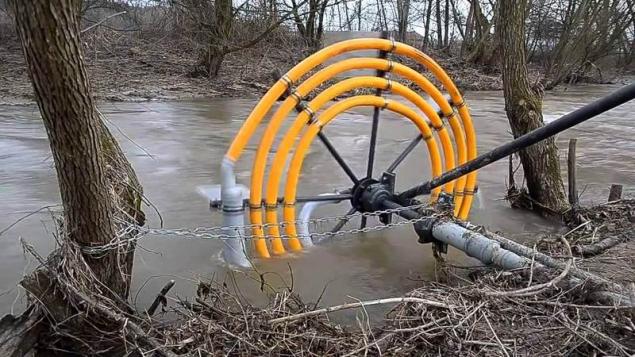
Pump in this case is the spiral of flexible tubes with a diameter of 50-75 mm, mounted with clamps to the wheel. In the intake part (closer to the outer contour) with an attached bucket from a pipe of larger diameter (150 mm).
The main host pipe reducer, through which water will flow into the pipeline. You can get it with factory equipment or septic system pump. The reducer is located at the axis of the wheel and is rigidly fixed to the fixed base.
The maximum height of rise of water is equal to the length of the pipe (from the fence), which is entirely immersed in water during operation. That is, the distance from the point of immersion to the exit point that passes the water bucket. At the time of immersion in the pipeline forms a closed system with air, land, and water passes through the tube to the center of the spiral.
Of course, this pump is not suitable for everyone — in the end, acts as an activator of the river. But for irrigation in the summer is a wonderful option. The cost of such devices is difficult to predict — the great value has presence of the material at hand.
Video how does a spiral pump
Option # 4. The pump from the compressor (airlift — airlift)If the farm already has a compressor — do not rush to purchase an additional pump. You can build a simple lift of water is literally two pipes.
The first pipe is used for water supply. For household purposes it will be sufficient Ø 30 mm. the Second need for air supply from the compressor. A diameter of 10-20 mm.
The efficiency of airlift pump depends on the power of the compressor, the depth of immersion and height of the feeder. It cannot exceed 70% due to design features. Efficiency will be equal to the depth of immersion divided by the sum of the depth of immersion and height of ascent (of water). In most cases, the optimum capacity of the compressor is exposed by experience.
Illustrative video of the operation of the pump from the compressor
Water has long been the number one task for the survival of entire cities. Today at the forefront of saving energy and natural resources — they are getting smaller and they are becoming more expensive. Therefore a partial return to the original technology without electricity or gasoline — a natural phenomenon. Perhaps in the future they will be the key to a healthy and harmonious life on our planet.
published
P. S. And remember, only by changing their consumption — together we change the world! ©
Source: www.rmnt.ru/story/water/782284.htm

Option # 1. Water pump for water overflowPrimitive design for pumping water, which can collect in 10 minutes, will serve as a useful assistant tool for working in the garden. This is especially useful when you need to repeatedly collect water from barrels with buckets. In fact, this non-return valve mounted on the pipe with a tap.

For manufacturing will need a tube, a hose and a few necks from plastic bottles in the collection.
Progress:
From cork take the gasket and cut it 2 mm smaller than the tube diameter, leaving untouched a segment of 3 mm. Drill a 10mm hole in the center of the lid. Set the petal into the cap and screwed the trimmed neck. It will squeeze the remaining segment. Insert the valve into the tube stock and put on a "skirt" from the trimmed plastic bottle. With the opposite end put the discharge hose. This device operates with just a few taps on the axis of the stem when the dispensing part with the valve immersed in water. Next, the liquid will go by gravity, while there are differences in levels. Then the water can be raised, submerging the rod in the barrel.
This is the only product with a "negative value." When it was created you not only will spend nothing (except time), but with the use of disposing of domestic waste.
Check valve with your hands. Step-by-step video for Assembly
Option # 2. A simple hand pump with his own handsIn this tutorial we give an example of a manual pump, which can be taken as the basis for creation of a stationary lifting post on the well or the well.
A — Classic design hand pump. B — Option a homemade pump from plastic tubes. The scheme of device: 1 — introduction inlet; 2 — valve; 3 — piston; 4 — valve; 5 — rod; 6 — shaft, combined with a discharge pipe; 7 — drain pump
For work we need:
Sewer pipe 50 mm PVC with taps, plug and cuff seals — 1 M. non-return valve 1/2" — 2 PCs. Pipe sewer PPR Ø 24 mm rubber, a pair of bolt/nut with washers Ø 6-8 mm. Clamps, sleeves, clips, fittings, other plumbing parts*. * Pump design can be customized depending on the availability of spare parts.
Method 1. Drain using the handle ofThis model is the easiest from home — the water rises in the piston rod, which is made of PPR pipe and poured on top.
Liner:
Cut pipe Ø 50 mm, length 650 mm is the basis for the sleeve. Make limit flap valve. To do this, the plug drill 8-10 holes, Ø 5-6 mm, and cut a round piece of rubber (about 3-4 mm) to the diameter of 50 mm. Fasten the flap on the center stub on the rivet or bolt (screw not suitable!). Petal valve ready. Install the plug into the pipe (sleeve) to the sealant through the sealant and additionally fix with screws through the pipe wall. The piston
In the pipe, PPR (700-800 mm) install the check valve. This can be done by way of "hot" to heat the pipe end and insert the fitting with the valve, which water must pass in the direction of the pipe (piston rod). To strengthen the connection screw-clamp until warm (to cool). The piston head can be made of the waste tube of sealant 330 ml, more precisely, its the bow. For this it is necessary, pre-heating, put in the liner — so the head is to take the desired shape and size. Then it should be cut and installed to a check valve in series with the help of the coupling with external thread or cap nut "American". Insert the piston into the sleeve and do the upper plug. It doesn't have to be airtight, just to keep exactly stock. On the free end of the rod (pipe) install the sleeves 90°. In the future, on the sleeves worn hose.
Assembly hand pump in the video
This pump is very reliable but not very convenient to point the spout of water is mobile, also located close to the operator. It can be somewhat modified for convenience.
Method 2. Lateral drainIn the liner should include corner tee 35°. The design is identical to the first embodiment, but in the pipe the piston rod do big holes without breaking the rigidity or used rod stock. In this case, the water will flow into the sleeve and lifting the opposite force of the operator to the location of the spout.
Video pump with side discharge
The main advantage of the described pumps is the low cost of the structure. The repair is made within a few minutes by replacing (or gluing) the "penny" items.
Option # 3. Spiral hydraulic pistonBehind it the formidable title lies a clever device for supplying water from the river over a short distance. This device is based on the carousel with the blades — like the water mill wheel. The carousel is driven by the river flow.

Pump in this case is the spiral of flexible tubes with a diameter of 50-75 mm, mounted with clamps to the wheel. In the intake part (closer to the outer contour) with an attached bucket from a pipe of larger diameter (150 mm).
The main host pipe reducer, through which water will flow into the pipeline. You can get it with factory equipment or septic system pump. The reducer is located at the axis of the wheel and is rigidly fixed to the fixed base.
The maximum height of rise of water is equal to the length of the pipe (from the fence), which is entirely immersed in water during operation. That is, the distance from the point of immersion to the exit point that passes the water bucket. At the time of immersion in the pipeline forms a closed system with air, land, and water passes through the tube to the center of the spiral.
Of course, this pump is not suitable for everyone — in the end, acts as an activator of the river. But for irrigation in the summer is a wonderful option. The cost of such devices is difficult to predict — the great value has presence of the material at hand.
Video how does a spiral pump
Option # 4. The pump from the compressor (airlift — airlift)If the farm already has a compressor — do not rush to purchase an additional pump. You can build a simple lift of water is literally two pipes.
The first pipe is used for water supply. For household purposes it will be sufficient Ø 30 mm. the Second need for air supply from the compressor. A diameter of 10-20 mm.
The efficiency of airlift pump depends on the power of the compressor, the depth of immersion and height of the feeder. It cannot exceed 70% due to design features. Efficiency will be equal to the depth of immersion divided by the sum of the depth of immersion and height of ascent (of water). In most cases, the optimum capacity of the compressor is exposed by experience.
Illustrative video of the operation of the pump from the compressor
Water has long been the number one task for the survival of entire cities. Today at the forefront of saving energy and natural resources — they are getting smaller and they are becoming more expensive. Therefore a partial return to the original technology without electricity or gasoline — a natural phenomenon. Perhaps in the future they will be the key to a healthy and harmonious life on our planet.
published
P. S. And remember, only by changing their consumption — together we change the world! ©
Source: www.rmnt.ru/story/water/782284.htm
